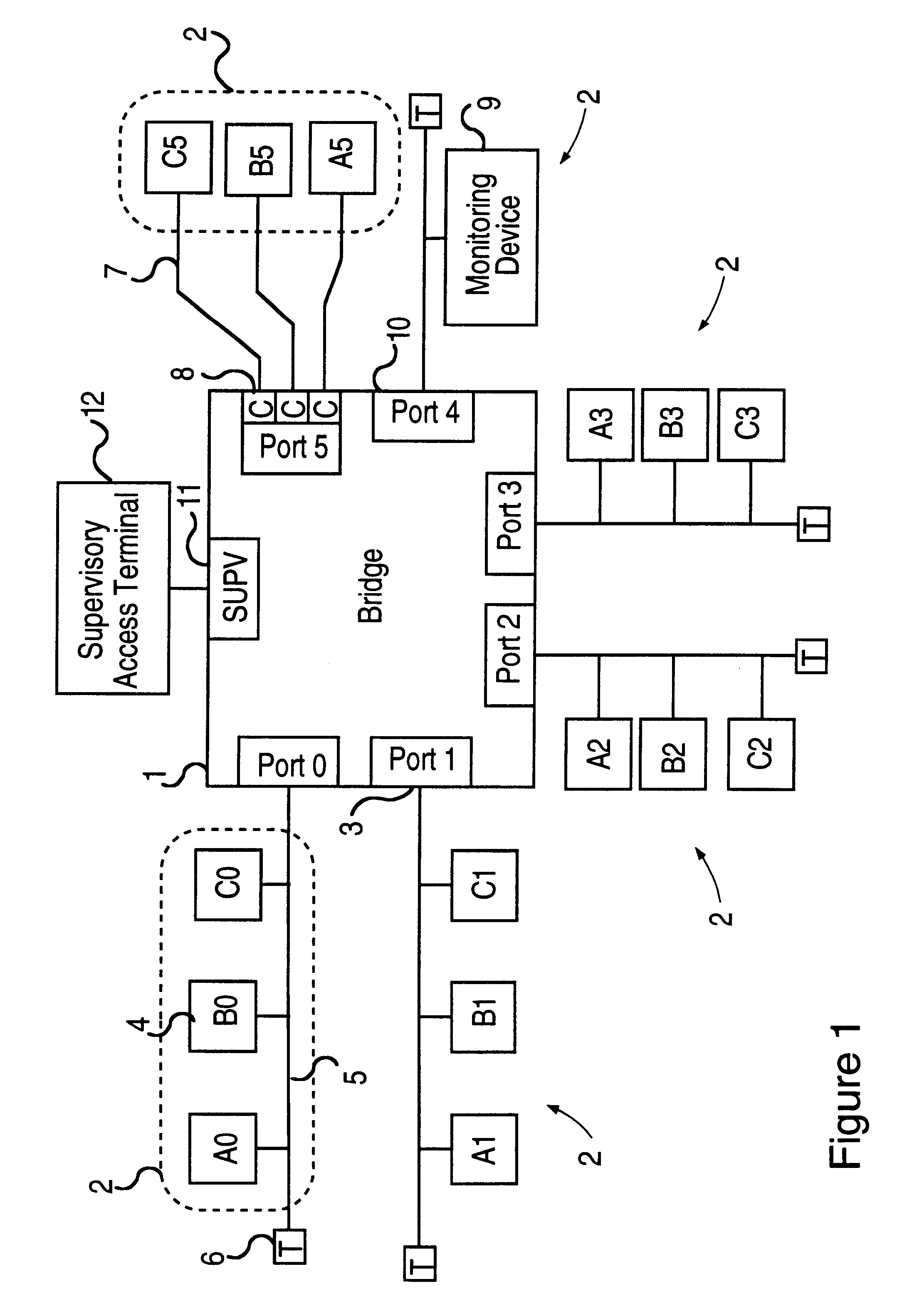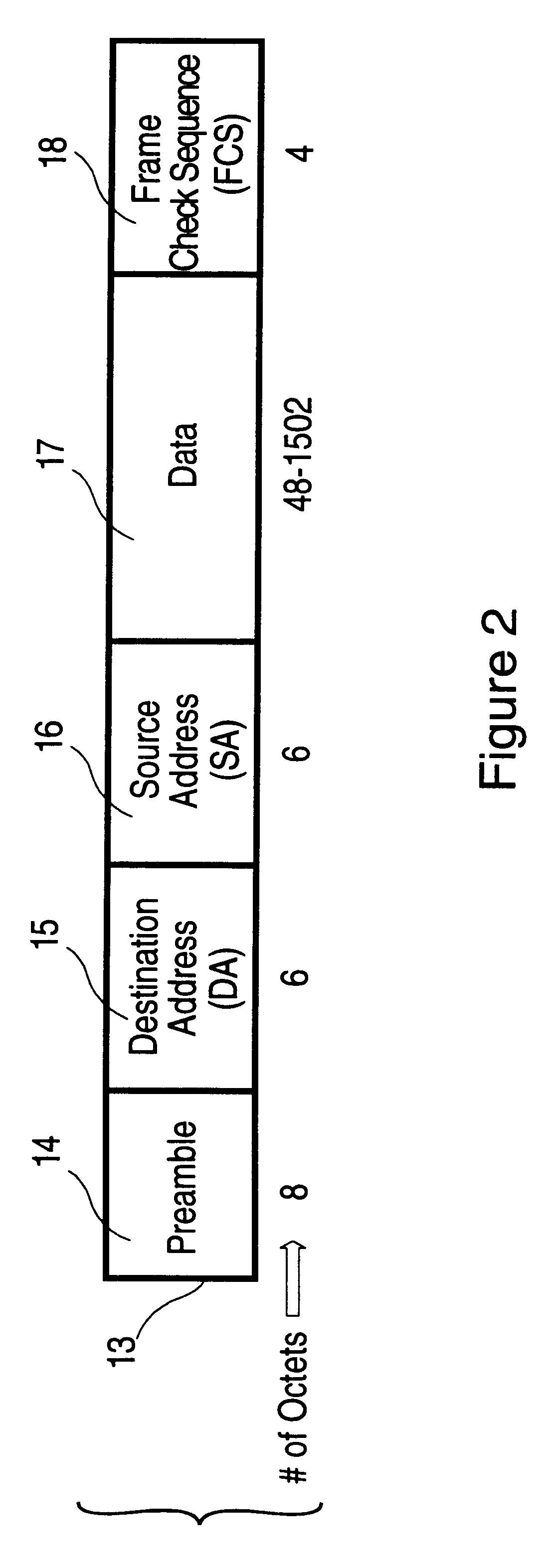Communication apparatus and methods
a multi-port bridge and router technology, applied in the field of packet oriented multi-port bridges and routers, can solve the problems of complex topology, affecting performance, security or other aspects of network operations, and complex behavior of multi-bridge or multi-router networks, so as to improve the performance of forwarding computation
- Summary
- Abstract
- Description
- Claims
- Application Information
AI Technical Summary
Benefits of technology
Problems solved by technology
Method used
Image
Examples
Embodiment Construction
The purpose of the bridge to be described below is to connect together multiple packet-based segments of a network, allowing efficient communications between stations on each network segment and also between stations located on different network segments connected to the bridge. It is also possible for stations on network segments not connected to a common bridge to communicate, provided that there is at least one segment-to-segment path between the stations.
The example provided here is of a bridge, however, the operation is similar for routers, and the extension to routers will be clear to those skilled in the art.
In some embodiments, network segments attached to the bridge will employ a packet-based communication protocol based on either Ethernet or FDDI. Other packet-based protocols are possible. The details of Ethernet and FDDI protocols are well known and are documented in standards, particularly in IEEE Standard 802.3 for Ethernet and ANSI Standard X3T9.5 for FDDI. The followi...
PUM
 Login to View More
Login to View More Abstract
Description
Claims
Application Information
 Login to View More
Login to View More - R&D
- Intellectual Property
- Life Sciences
- Materials
- Tech Scout
- Unparalleled Data Quality
- Higher Quality Content
- 60% Fewer Hallucinations
Browse by: Latest US Patents, China's latest patents, Technical Efficacy Thesaurus, Application Domain, Technology Topic, Popular Technical Reports.
© 2025 PatSnap. All rights reserved.Legal|Privacy policy|Modern Slavery Act Transparency Statement|Sitemap|About US| Contact US: help@patsnap.com



